Well, you followed all our recommendations about establishing a deer orchard, so now you can set back and enjoy years of returns from your efforts! It would be nice if that were true, but once established, deer orchards require periodic maintenance for you to realize their full potential. A well-planted, well-maintained deer orchard will be helping your deer for decades, as long as you follow these recommendations.
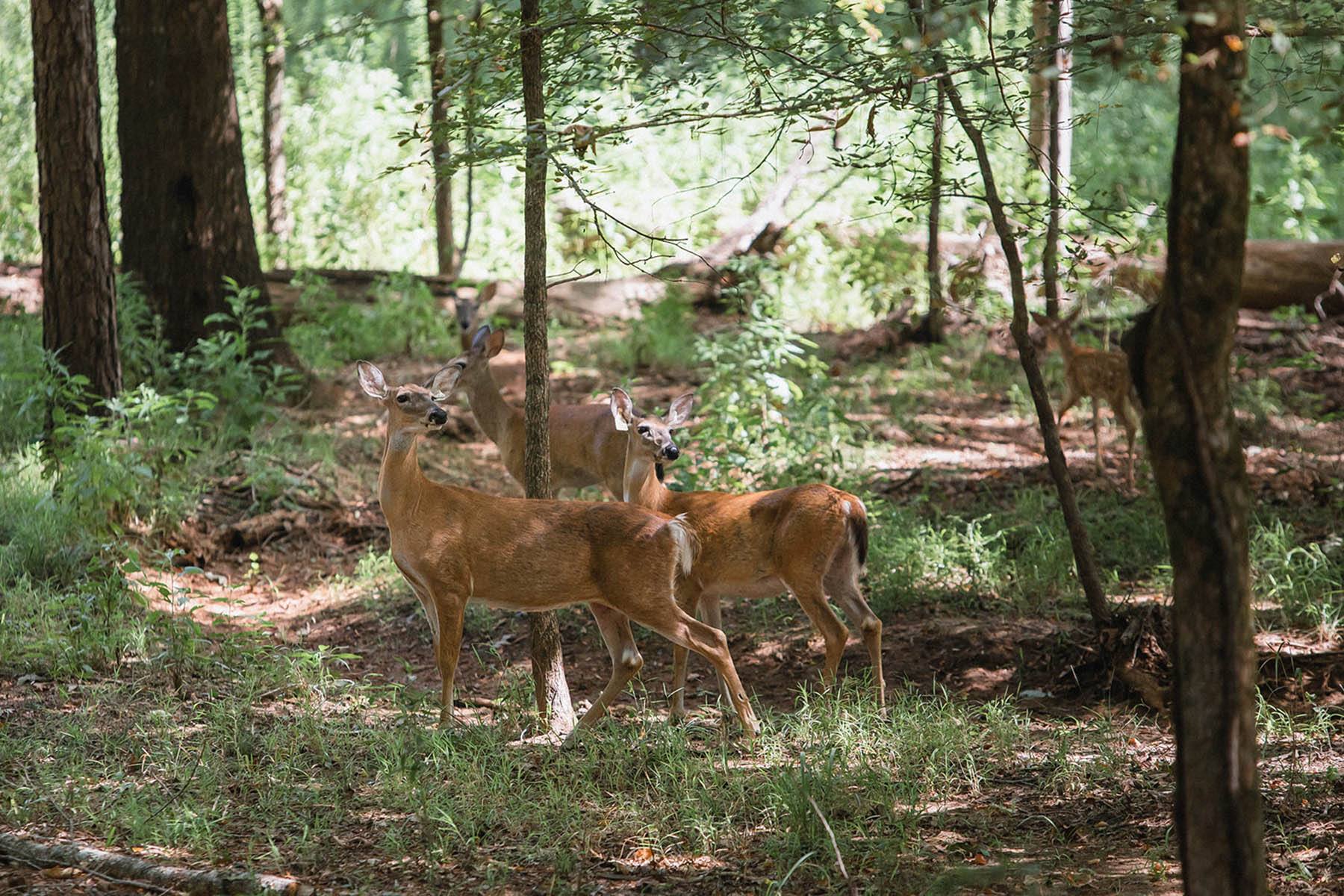
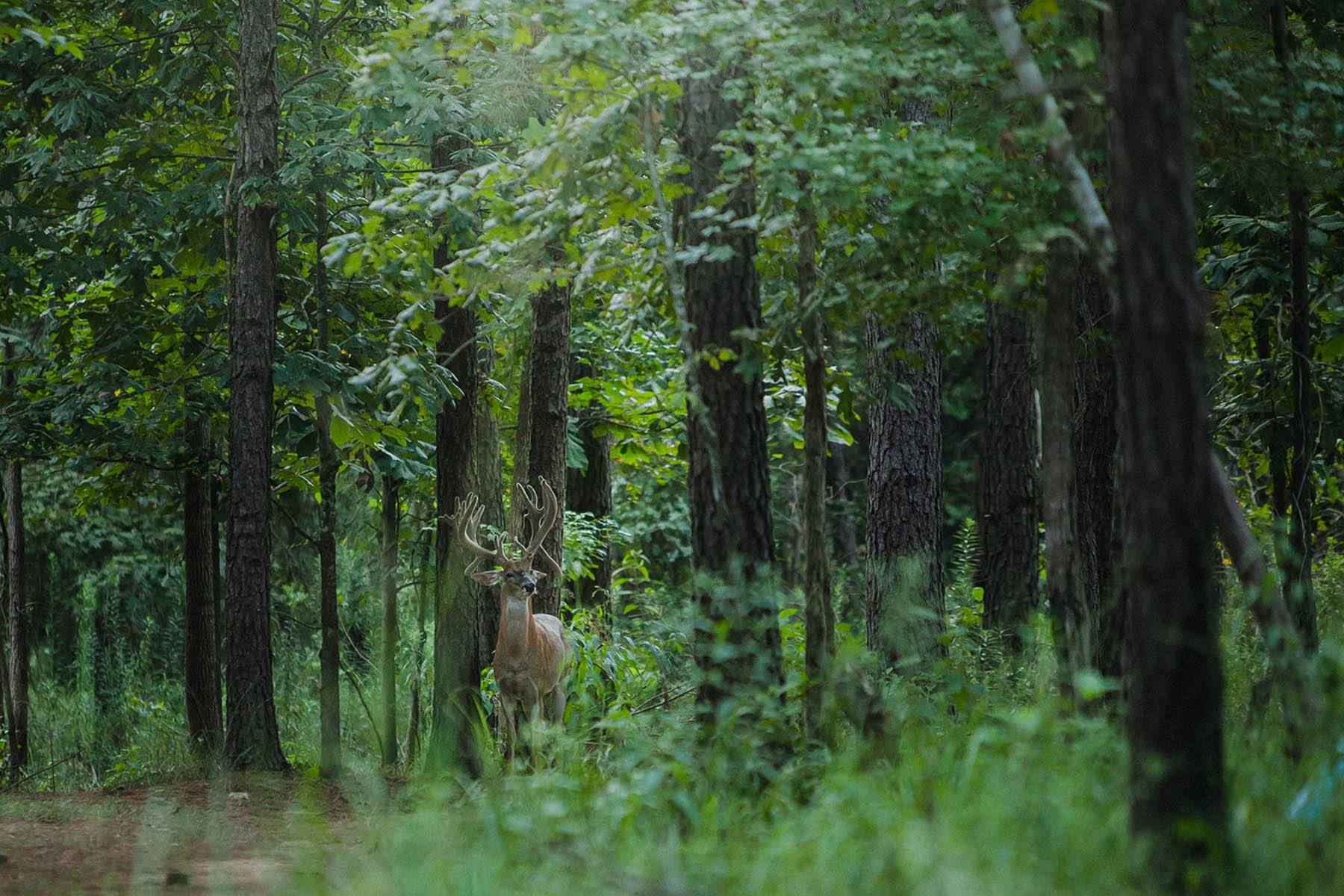
1. Water Your Trees
Your fruit and nuts, shrubs and vines will arrive either in pots or as bare rooted plants. Either way, they have been growing under nursery conditions throughout their young lives, and have established a narrow zone of roots about the base. Once in the ground, you will have to give them time to expand their root systems, in order to obtain needed water and nutrients. This is their most vulnerable time. You cannot rely on nature to provide everything they need the first months after planting. Proper and frequent watering is the single-most important early maintenance of your trees.
One way to mitigate dry growing conditions is to plant your trees at the proper time. That means in the early spring in the North and either early fall or early spring in the South. Unfortunately, local nurseries seldom have trees available at the best times for planting, especially Fall. That is why it is best to acquire your plants from WildTree, where getting you the plants at the proper time is our mission.
At planted we noted you will need to thoroughly water each plant, at least a gallon of water. Within a few days, however, they may need watering again. Getting water to your plants can be troublesome, especially for deer orchards distributed properly around your property. We have come to use a simple system, including a 100-200 gallon tank or “tote,” usually taken to your orchard in the back of a truck or UTV. The simplest approach is to connect a water hose to the tank, using a standard hose bib, then driving through your orchard; stopping periodically and letting gravity deliver water to each tree.
We also have used small water pumps, either electric or gasoline, to put pressure on the hose to deliver from a distance. Simple water pumps can be obtained at a reasonable price from a plumbing supply store or your local big box home improvement center.
We generally recommend watering your trees about every week during the first month after planting, but this depends on local weather conditions. If you get at least one inch of rain in a week, you can forego watering. After the first month, use good judgement to provide at least an inch of water every two weeks. If you plant in the fall, your trees will rush to put on new roots until the first hard frost, then go dormant until spring. In the north, spring rains may give you a break from your watering chores, but as summer develops, you will have to keep them watered until the first fall. After the first year, you should just use good judgment on when to water. Learn to recognize the signs of drought stress, before the plant wilts and drops leaves. If that happens, you will lose growth that season trying to recover the plant.
Lastly, fruit and nut trees always try to put on more fruit than they need to reproduce. This assures reproduction. Young trees naturally cast some fruit, since they cannot supply the needs of so many fruits and nuts! So, do not get too alarmed if this happens the first couple of years after planting. However, plants also will cast fruit if they become too dry! So, a well-planned watering system is critical.
If you learn to anticipate what your plants need, when they need it, your deer orchards will thrive and provide cost-effective supplements to your deer.
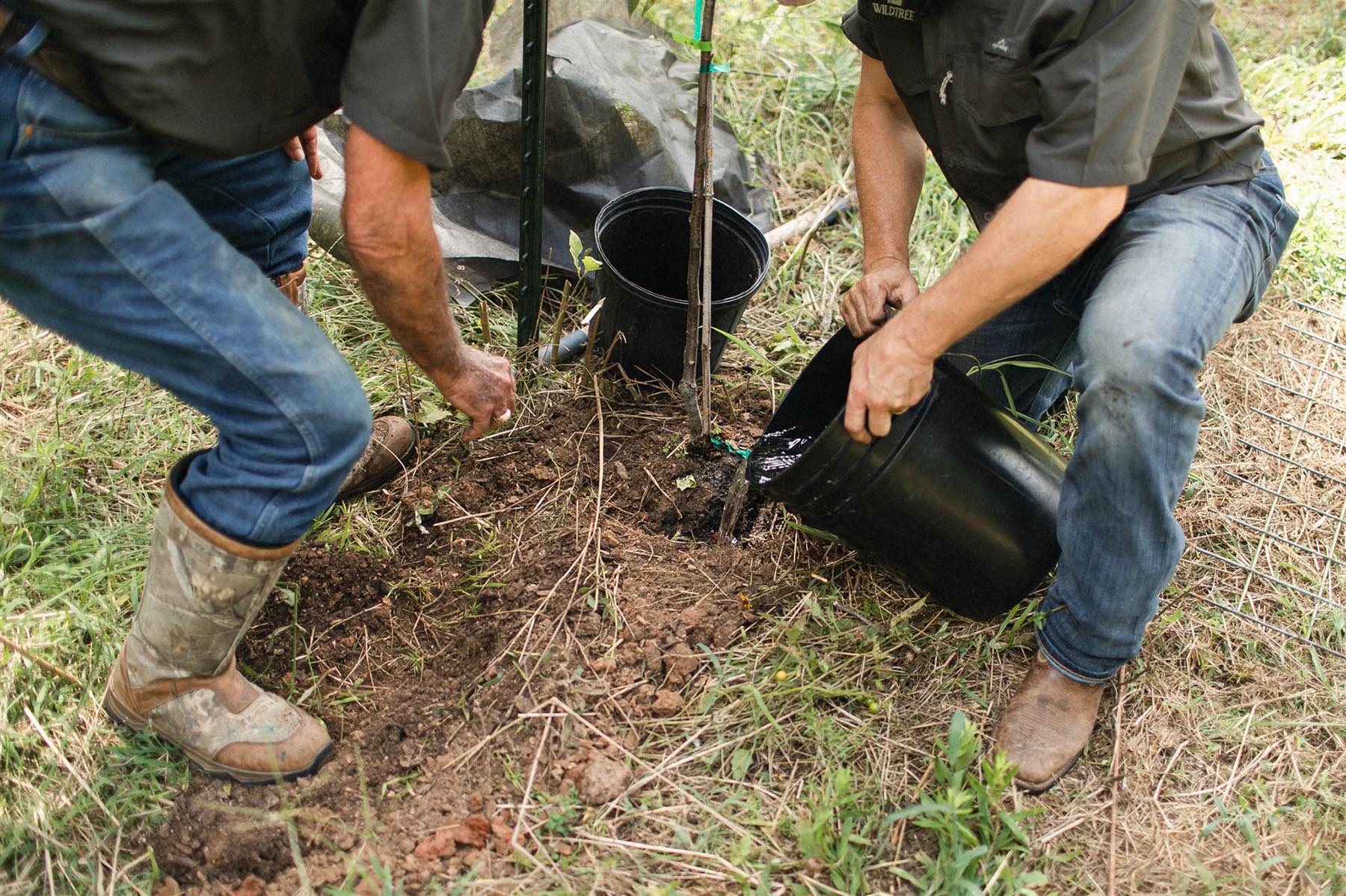
2. Control Weed Competition
Most deer orchards are established in manner similar to food plots. The average deer orchard is developed in an area that once was inhabited by native vegetation. Although herbicide site-preparation , followed by disking will reduce weed competition, they will not eliminate it!
The greatest weed competitor of your plants will be grasses and woody regrowth. Grasses are highly adapted to produce elaborate root systems, and have most of their biomass beneath the ground surface. So, grasses will rob your plants of critical moisture and nutrients. One way to reduce early competition is to follow our planting instructions, which includes placing ground cloth around the base of the plant at planting. This will keep grasses from growing immediately around your plant.
Woody regrowth can appear at an alarming rate! They originate from roots left in the ground around your plants. The average woody sprout can grow as much as 5-6 feet in a single season! So, we recommend coming back into your orchard in early spring and spraying a herbicide such as glyphosate around the plant in a 3-4 feet circle. DO NOT allow herbicide to touch the base of your plants, as the bark or stem will absorb the herbicide, killing your plant or retarding growth. Also, avoid using any herbicide that is ground active, as this can be translocated into your plant by its roots.
Our experience has been you will have to spray your orchards about twice a year to keep competition suppressed. If you do not want to spray the entire orchard, you can mow the approximately 25 feet wide strips between trees at least three times during the growing season.
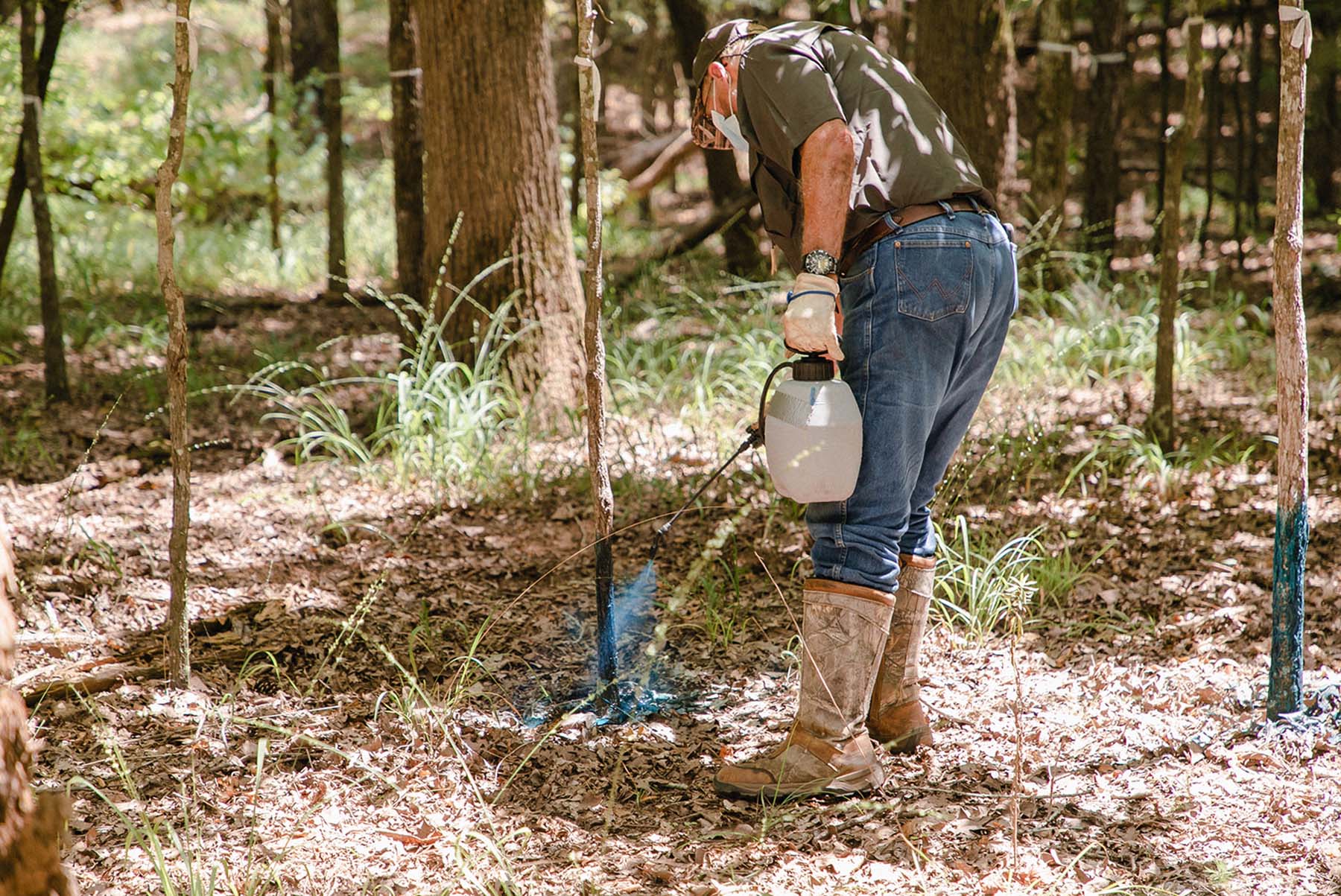
3. Fertilization of Your Plants
Your plants will arrive from the nursery, after having received regular applications of fertilizer during their early life. It is not a good idea to fertilize your trees and shrubs during their first season in your deer orchard. They do not need it, and doing so will make them highly attractive to deer and other wildlife. Of course, if you have placed a protective cage around your plants, and even a growth tube, this will prevent some forging by wildlife. Even with a protective cage, deer can reach as high as 6 feet to feed on your trees.
After the first growing season, we like to apply fertilizer at the rate of one pound per inch of basal diameter within the drip line of your trees. The drip line is the area defined by projecting the outward edges of their crown to the ground. We even mark this area using pin flags. Then distribute your fertilizer evenly, being careful not to place fertilizer within 6 inches of the plant base. Tree spikes are discouraged, as they do not spread fertilizer evenly.
This brings up the question as to what type of fertilizer to use? The best answer is the one recommended by your soils laboratory from soil samples taken at your deer orchard. A more simple answer (although not the best) is to use a balanced fertilizer such as 13-13-13. There is disagreement among biologists whether to fertilize in the spring or fall. Since nitrogen is used primarily for leaf and fruit growth, and since nitrogen tends to dissipate in a few weeks, it may be a waste to apply N in the fall. Phosphorus is important for a host of physiological activities, including growth and reproduction; while potassium benefits root growth. So, a spring application of these macronutrients may be best. We tend to fertilize our trees in the spring in the South and fall in the north.
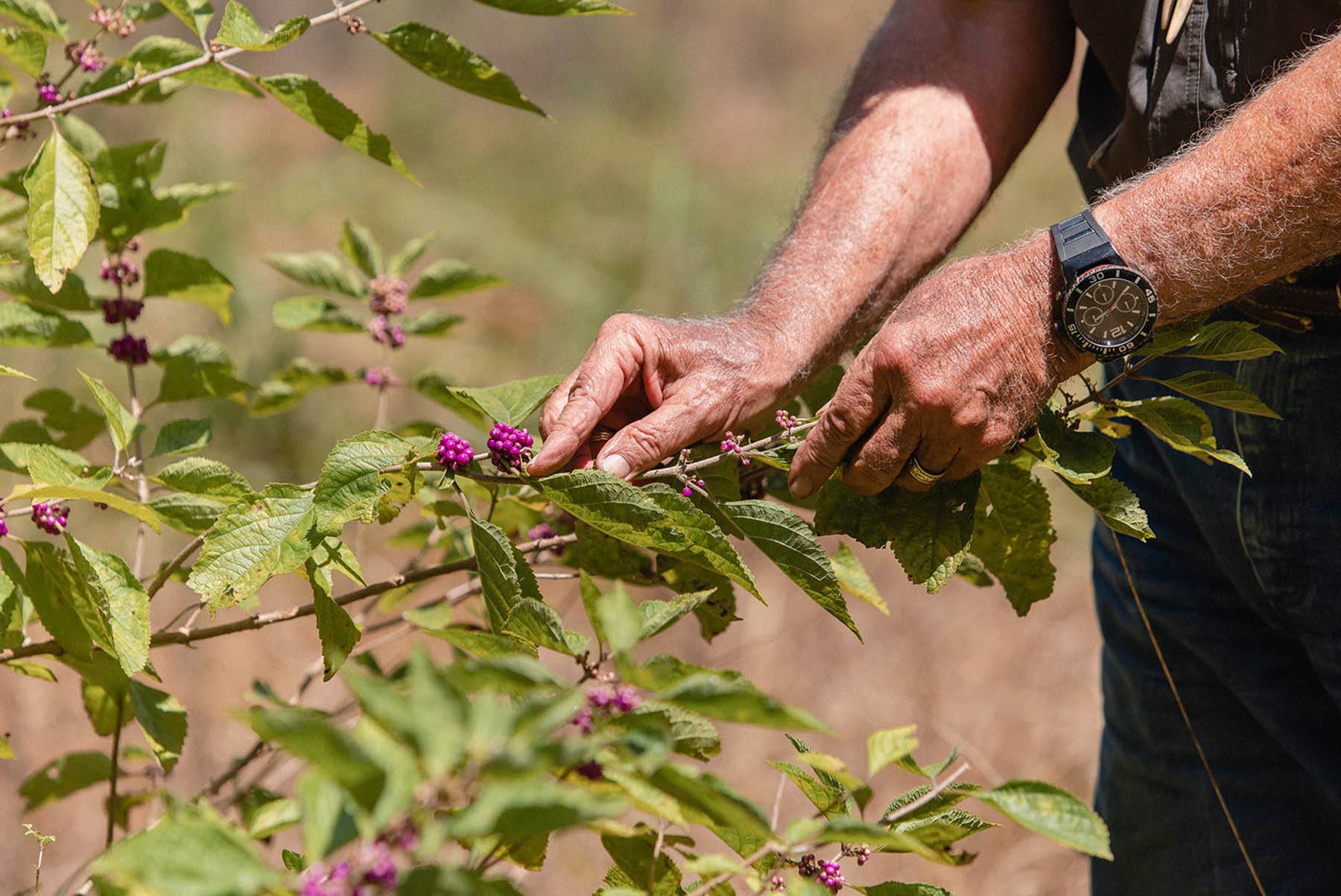
4. Pest Management
You will be planting a diversity of trees, shrubs and vines in your deer garden, each attracting different types of pests. The most common are defoliating caterpillers, especially “web worms.” Anytime your plant is defoliated, it loses stored resources and has to deplete additional resources when regrowing their leaves. So, caterpillar control is a must in maintaining your orchards.
It is wise to visit your orchards frequently, keeping an eye out, not only for drought stress, but also pests. There are a host of safe pesticides you can use to control insects in your orchard. Yet, please be careful, since honeybees will be very important in assuring an abundant fruit and nut crop.
Other pests do physical damage to your plants, by depositing their eggs beneath the bark. The emerging larvae feed on the cambium layer, cutting off water flow to the upper portion of the plant. These usually represent various species of bark beetles. One insect in particular, has proved to be a “quiet” pest in our deer orchards—the twig girdling beetles (www.tfsweb.tamu.edu). These beetles chew a girdle around the stems of your trees, then deposit eggs in the dying twigs. They really do not harm the tree, but the twigs effectively prune the tree in a manner that affects future fruiting and growth.
You should check your trees for signs of girdling, and look beneath your trees for cut branches. If they are present, you should not spray the tree; rather, collect the branches and burn them. That will reduce the emergence of new beetles in the spring.
In a good pest management program, you should carefully examine your plants for any signs of damage from insects. You do not have to be an entomologist to diagnose potential problems. Your local extension agent of university plant scientists can help identify the pest involved. There even are a host of Internet sites that provide identification aide and advice on effective treatments; however, we prefer to rely on professionals for sound, safe advice.
If you pay attention to these four principles of Deer Orchard Maintenance, your investment in wildlife nutrition will last over the life of your management program. Wildtree.co and our partners have deer orchards that were planted over 20 years ago, that are highly productive to this day. If you divide the investment you made in establishing your orchard by the number of years life expectancy, the annual cost is minimal and well worth the investment.

